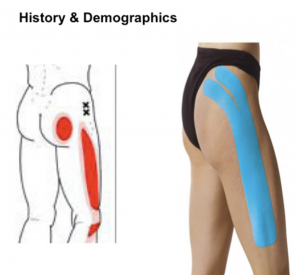Anterior Knee Pain (Patellofemoral syndrome)
What is Anterior Knee Pain?
Anterior knee pain is pain at the front of the knee often behind the kneecap (patella). It can refer to many different problems including:
- Chondromalacia of the patella — softening or breakdown of the articular surface cartilage under the kneecap (patella)
- Inflammation of the patellar tendon (patella tendinitis), where the kneecap attaches to the shin bone below.
- Inflammation of the quadriceps (quadriceps tendinitis) tendon, where the kneecap attaches to the thigh muscles above.
When you bend or straighten the knee, the underside of the kneecap glides over the end of the femur (thigh bone) at the patellofemoral joint.
When your child’s kneecap doesn’t move properly it can cause anterior knee pain. Anterior knee pain is also referred to as runner’s knee, jumper’s knee, patellofemoral syndrome, chondromalacia patella and patellar tendonitis.
Causes
Anterior knee pain can be caused by:
- Abnormal alignment of the leg
- Abnormal position of the kneecap
- Muscle tightness or weakness in the front and back of the thigh
- Overuse from repetitive impact activity
- Contact injuries
- Kneecap dislocations
- Fat pad or synovial impingement — pinching of the inner lining of the knee when moving
- Arthritis
Anterior knee pain can affect anyone, it is more common in certain types of people including:
- Active people, particularly runners (often with a tight Iliotbial Band (ITB) – ITB friction or Runner’s Knee)
- Girls and young women
- People who are overweight
ITB (Ilio-Tibial band)
What is ITB?
This is a tight band of fibrous tissue that acts like a coiled spring storing energy that helps humans in their unique ability to stand, walk and run longer distances. It sits on the outer part of the pelvis, lies over the bony upper thigh and then inserts just below the outer knee joint. The tension and backwards/forwards balance position of this spring is delicately tuned by the core muscles and can cause symptoms of pain over the trochanteric area mimicking Trochanteric Bursitis or lower down over the knee joint causing ITB friction Syndrome or Runner’s Knee.
Signs and symptoms of Anterior Knee Pain
Anterior knee pain is often a dull, aching pain that can be felt behind the kneecap, below the kneecap or on the sides of the kneecap.
A common symptom is a pain and a grinding sensation which is often more noticeable during stairs, sitting-to-standing, and during deep knee bends or sitting after standing for a prolonged time.
Testing and diagnosis
At Surrey Orthopaedic Clinic, anterior knee pain is treated only by Surgeons who specialise in diagnosing and treating knee injuries.
Our expert doctors will examine you, assess your pain, learn about your medical history and perform diagnostic imaging (X-rays and MRI scans) to diagnose the problem.
We will work with you to develop an individualised treatment plan.
Treatments for Anterior Knee Pain
In most cases, anterior knee pain can be treated with a variety of non-surgical options. Only in rare cases, surgery may be recommended.
Non-surgical treatment may include:
- Resting the knee
- Anti-inflammatory medications such as ibuprofen or aspirin to help relieve pain
- Modifying your activity i.e. changing the way you exercise / run
- Exercises to strengthen and stretch the quadriceps and hamstring muscles
- A knee brace or taping the knee to ensure proper alignment
- Wearing appropriate running or sports shoes
- Orthotics which are special shoe inserts and support devices (e.g for flat feet)
- Losing weight (if appropriate)
Surgical options:
If your knee pain cannot be treated non-surgically, we may recommend surgery.
During surgery, expert surgeons may remove any kneecap cartilage that has been damaged and may adjust your tendons to help her kneecap move more smoothly in proper alignment.
Our Orthopaedic Knee Surgeons





